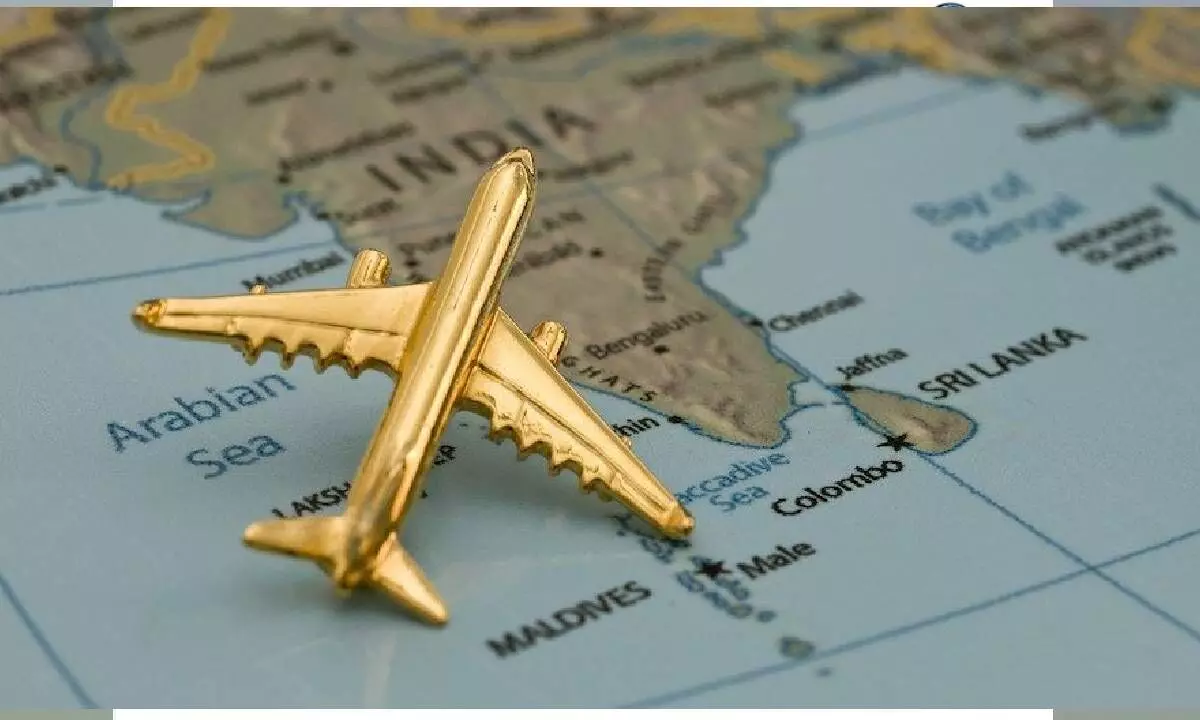Booming aviation sector augurs well for Indian economy
The Union Government proposes to develop 100 airports by 2024
image for illustrative purpose

India’s domestic air passenger traffic surged 25% on an annualised basis to 12.1 million passengers in July, according to data from the Directorate General of Civil Aviation.
With a current compounded annual growth rate (CAGR) of 5.8% (according to IATA), India is one of the fastest-growing aviation markets. How much further can it grow, is the million dollar question.
In a previous 20-year market forecast, IATA predicted that India will overtake the UK to become the third-largest aviation market by 2026. This still leaves it behind the US and China.
In the last eight years, the number of airports in the country has increased from 74 to 141, and over the next five years, around 80 new airports are expected to be opened.
“People need and love to fly. The strong demand for travel is one element supporting a return to profitability by airlines. In 2023 we expect airlines globally to post a $9.8 billion net profit. It’s an impressive number, particularly after huge pandemic losses. But a 1.2% average net profit margin is just $2.25 per departing passenger. As a return, that is not sustainable in the long-term,” points out a leading aviation analyst.
Moreover, it appears that, while the pandemic has changed many things in aviation, it has not righted aviation’s famously unbalanced value chain. The latest indication came last week as European airports announced a EUR 6.4 billion ($7 billion) collective profit in 2022. In comparison, IATA estimates that European airlines made a $4.1 billion profit for the same year.
We don’t begrudge any business hard-earned profits. But this does raise an interesting question. Is airport economic regulation effectively defending the public interest when a monopoly supplier (airports) can generate seemingly much healthier returns than the competitive businesses (airlines) they supply? The governments should be looking into this aspect more minutely.
Continuing to augment the airport infrastructure, the government aims to develop 100 airports by 2024 — under the UDAN Scheme, and expects to invest $1.83 bn in the development of airport infrastructure by 2026. The government is also focusing on connectivity to smaller cities. “We aim to inaugurate at least three airports in Uttar Pradesh, including in Moradabad and Azamgarh, this year,” an official said.
In the financial year of 2023, the Indira Gandhi International Airport (IGI) handled more than 65 million passengers. The aviation industry in the country has grown drastically over the last decade, with the domestic air travel market witnessing the fastest growth worldwide. However, there was a drop of more than 66 percent, in the total number of passengers handled on a year-over-year basis, in the financial year 2021. Low-cost carriers such as Indigo and Jet Airways were the prominent institutions in the domestic sector, but with the suspension of operations by the latter in early 2019, the runway seems set for IndiGo to take off in the market. Jet Airways resumed operation mid of 2022.
“The ministries had ensured utilisation of extra spaces at IGI after congestion related issues raised by passengers in December last year,” another government official said, seeking to remain unnamed. He added, “As a result of this, the airport now does not have any scope of expansion and requires their new terminal to be operational for efficient handling to passengers.”
Delhi’s airport operators have been asked to make its new terminal operational by September.The government has also begun its work towards installing additional X- ray machines to support security infrastructure at airports. Last December, it had started adding the check-in counters and baggage drop facilities.
One of the initiatives for the upcoming festive and winter travel season will also include the use of social media platforms to provide real-time updates to passengers to make airport transit seamless. “Information regarding enhancement in processing capacity and expansion of security check areas will also be communicated,” another official said. There is plenty in place to support the growth of the industry. The country has a large and growing population and an expanding middle class. This will create an increase in the number of passengers, both for domestic and international travel.
CAPA India further predicts that if the ramp-up in scale is achieved by financial year 2043, aviation could make a $1 trillion annual contribution to the national economy, taking into account direct, indirect, induced and catalytic impacts.
To provide a level-playing field for carriers, CAPA proposed dismantling the negative fiscal regime and providing infrastructure ahead of time.
“System efficiency must be maximised to enable the emergence of mega-carriers,” an aviation research firm said.

